|
(RE)staging the Art Museum?

Alex Coles - the Transdisciplinary Studio

Work, Work, Work - a Reader on Art and Labour
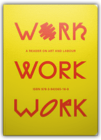
Hito Steyerl - the Wretched of the Screen. E-flux Journal

The Space of Agonism - M Miessen in Conversation with Chantal Mouffe. Critical Spatial Practice 2

Education

Do It

Above the Pavement - the Farm! : Architecture & Agriculture at Public Farm 1

Above the Pavement—the Farm! presents a delectable range of ideas and issues situated at the intersection of architecture, urbanism, and food. Featuring a lively mlange of voices depicting the making of P.F.1—with contributions by artist and agricultural activist Fritz Haeg, architectural historian Meredith TenHoor, architect Winy Maas, and head chef Michael Anthony of New York City's Gramercy Tavern—this book introduces a new era of ecological thinking and urban sustenance. Amale Andraos and Dan Wood are the founders of New York City-based WORK Architecture Company. Futurist Manifestos
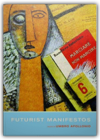
E-Flux Journal: Are You Working Too Much? Post-Fordism, Precarity, and the Labor of Art

E-Flux Journal: What is Contemporary Art?

Hans Ulrich Obrist & John Baldessari: The Conversation Series Volume 18

Conversation Pieces

As A Weasel Sucks Eggs, An Essay on Melancholy and Cannibalism
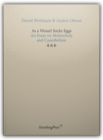
relevant today, as the authors examine the enigmatic relation of melancholia to an early kind of cannibalism, using readings from Kafka, Beckett, Freud, and Hegel, among others, to illustrate their points. Touching on such themes as primitive sacrificial rites and contemporary anthropology, philosophy, and linguistic theory, the text asks if it is possible to transfer this idea of a different kind of food to other art forms, such as painting and sculpture. "The saturnine mind is gloomy and depressed, yet inspired and radiant," write the authors. "It is the state of mind of inspiration." Cultures of the Curatorial

The Unavowable Community

Self-Organisation: Counter-Economic Strategies

Curating and the Educational Turn

Art & Activism in the Age of Globalization: Reflect No. 8

2012 아르코 미디어 비평 총서 시리즈 3 Arko Media Critique Series

ㅇ 인사말 /이한신 ㅇ 작가 소개 ㅇ 글쓴이 소개 ㅇ 글 / 연대의 열정과 초연 사이 1. 흐름, "모든 안착한 사람들"에게—————————————————————— p. 19 2. 스침, "이때 대답해야 하는 것이 바로 살갗이다."——————————— p. 25 3. 시적인 것들, "내 언어가 아닌 다른 언어로 언술하고 싶다."———— p. 47 4. 연대, "성직자는 한 사름도 따라가지 않았다."————————————— p. 63 5. 투쟁, "우리는 우리 자신의 마귀이다."—————————————————— p. 83 6. 종착, "그리하여 밤이 밤을 밝히었다."—————————————————— p. 95 Profit Over People

Design and Art

The texts include writings by Paul Rand, Hal Foster, Miwon Kwon, and others that set the parameters of the debate; utopian visions, including those of architect Peter Cook and writer Douglas Coupland; project descriptions by artists (among them Tobias Rehberger and Jorge Pardo) juxtaposed with theoretical writings; surveys of group practices by such collectives as N55 and Superflex; and views of the artist as mediator—a role assumed in the past to be the province of the designer—as seen in work by Frederick Kiesler, Ed Ruscha, and others. Finally, a book that doesn't privilege either the art world or the design world but puts them in dialogue with each other. Contributors: David Bourdon, Peter Cook/Archigram, Douglas Coupland, Kees Dorst, Charles Eames, Experimental Jetset, Vilém Flusser, Hal Foster, Liam Gillick, Dan Graham, Clement Greenberg, Richard Hamilton, Donald Judd, Frederick Kiesler, Miwon Kwon, Maria Lind, M/M, N55, George Nelson, Lucy Orta, Jorge Pardo, Norman Potter, Rick Poynor, Paul Rand, Tobias Rehberger, Ed Ruscha, Joe Scanlan, Mary Anne Staniszewski, Superflex, Manfredo Tafuri, Rirkrit Tiravanija, Paul Virilio, Joep van Lieshout, Andy Warhol, Benjamin Weil, Mark Wigley, and Andrea Zittel. Copublished with Whitechapel Art Gallery, London Interiors - CCS Readers: Perspectives on Art and Culture

1,2,3... Avant-Gardes. Film/Art between Experiment and Archive

1,2,3... Avant-Gardes. Film/Art between Experiment and Archive

The Fall of The Studio: Artists at Work

The Storyteller

Situation

CURATING SUBJECTS

Art and Social Change: A Critical Reader
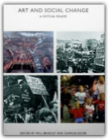
The Murmuring of the Artistic Multitude: Global Art, Memory and Post-Fordism

Rotterdam Dialogues: The Critics, the Curators, the Artists

Moscow Symposium: Conceptualism Revisited

Going Public

Lapdogs of the Bourgeoisie: Class Hegemony in Contemporary Art
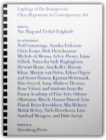
Art in Theory 1900 - 2000: An Anthology of Changing Ideas

Steal this Book

Archaeologies of the Future: The Desire Called Utopia and Other Science Fictions

Where Art Belongs

AA Words Two: Anti-Object?: The Dissolution and Disintegration of Architecture

Architecture on Display: On the History of the Venice Biennale of Architecture

2012 아르코 미디어 비평 총서 시리즈 2 2012 Arko Media Critique Series

목차 ㅇ 인사말 / 이한신 ㅇ 작가 소개 ㅇ 글쓴이 소개 ㅇ 글 / 역설의 자유를 향유하다- 안정주의 비디오예술——————————————-p. 19 A Brief History of Curating

Informalize! Essays On The Political Economy Of Urban Form

The Laws of Simplicity

Finally, we are learning that simplicity equals sanity. We're rebelling against technology that's too complicated, DVD players with too many menus, and software accompanied by 75-megabyte "read me" manuals. The iPod's clean gadgetry has made simplicity hip. But sometimes we find ourselves caught up in the simplicity paradox: we want something that's simple and easy to use, but also does all the complex things we might ever want it to do. In The Laws of Simplicity, John Maeda offers ten laws for balancing simplicity and complexity in business, technology, and design—guidelines for needing less and actually getting more. Maeda—a professor in MIT's Media Lab and a world-renowned graphic designer—explores the question of how we can redefine the notion of "improved" so that it doesn't always mean something more, something added on. Maeda's first law of simplicity is "Reduce." It's not necessarily beneficial to add technology features just because we can. And the features that we do have must be organized (Law 2) in a sensible hierarchy so users aren't distracted by features and functions they don't need. But simplicity is not less just for the sake of less. Skip ahead to Law 9: "Failure: Accept the fact that some things can never be made simple." Maeda's concise guide to simplicity in the digital age shows us how this idea can be a cornerstone of organizations and their products—how it can drive both business and technology. We can learn to simplify without sacrificing comfort and meaning, and we can achieve the balance described in Law 10. This law, which Maeda calls "The One," tells us: "Simplicity is about subtracting the obvious, and adding the meaningful." The Violence of Financial Capitalism

The Archive

This volume surveys the full diversity of our transformed theoretical and critical notions of the archive—as idea and as physical presence—from Freud's "mystic writing pad" to Derrida's "archive fever"; from Christian Boltanski's first autobiographical explorations of archival material in the 1960s to the practice of artists as various as Susan Hiller, Ilya Kabakov, Thomas Hirshhorn, Renée Green, and The Atlas Group in the present. Copublished with Whitechapel Art Gallery, London Markus Miessen: The Nightmare of Participation

Critical Spatial Practice - What is Critical Spatial Practice?
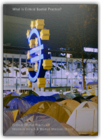
The Democratic Paradox

Design As Art

2012 아르코 미디어 비평 총서 시리즈 1 Arko Media Critique Series

목차 ㅇ 인사말 / 이한신 ㅇ 작가 소개 ㅇ 글쓴이 소개 ㅇ 글 / 미디어 신체의 예술가와 랜덤 SF시간- 비말라키와 목련경의 미디어화된 세계와 노재운의 미디어 미학 미디어 신체를 지닌 예술가———————— p. 27 이중 미디어화된 세계: 비말라키 넷이라는 `A New World`————————p. 41 시간의 화살이 부러지면—————————— p. 71 극종(劇終)과 역사의 종말————————— p. 77 The Future of Art: A Manual

Locating the Producers: Durational Approaches to Public Art

The Culture of Curating and the Curating of Culture

Hans Ulrich Obrist: Battery City: A Post-Olympic Beijing Mini-Marathon

Everything You Always Wanted to Know About Curating* But Were Afraid to Ask

Teaching Art in the Neoliberal Realm: Realism versus Cynicism

The Personal Camera: Subjective Cinema and the Essay Film

The Rest Is Noise: Listening to the Twentieth Century

A New York Times Book Review Top Ten Book of the Year Time magazine Top Ten Nonfiction Book of 2007 Newsweek Favorite Books of 2007 A Washington Post Book World Best Book of 2007 In this sweeping and dramatic narrative, Alex Ross, music critic for The New Yorker, weaves together the histories of the twentieth century and its music, from Vienna before the First World War to Paris in the twenties; from Hitler's Germany and Stalin's Russia to downtown New York in the sixties and seventies up to the present. Taking readers into the labyrinth of modern style, Ross draws revelatory connections between the century's most influential composers and the wider culture. The Rest Is Noise is an astonishing history of the twentieth century as told through its music. Having Been Said: Writings & Interviews Of Lawrence Weiner 1968-2003

Since his earliest days as a professional artist, Weiner has given written and verbal expression to questions concerning his work and its context. These utterances—statements, interviews, lectures, and conference contributions—have been collected together in this publication for the first time, and ordered chronologically. Taken as a whole they afford an insight both into a complex individual biography and into the wider development of art and culture and the challenge that this entails. Edited by Gregor Stemmrich and Gerti Fietzek. Paperback, 6.5 x 9.5 in. / 496 pgs / 190 b/w. Seven Days in the Art World

In a series of beautifully paced narratives, Sarah Thornton investigates the drama of a Christie's auction, the workings in Takashi Murakami's studios, the elite at the Basel Art Fair, the eccentricities of Artforum magazine, the competition behind an important art prize, life in a notorious art-school seminar, and the wonderland of the Venice Biennale. She reveals the new dynamics of creativity, taste, status, money, and the search for meaning in life. A judicious and juicy account of the institutions that have the power to shape art history, based on hundreds of interviews with high-profile players, Thornton's entertaining ethnography will change the way you look at contemporary culture. 8 illustrations This Is Not a Program

Architecture Words 3: The Poetics of a Wall Projection

Playing the City - Interviews. 51 Artists, 10 Questions
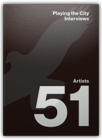
Film Curatorship: Museums, Curatorship and the Moving Image
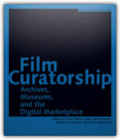
Film Curatorship neither offers a scholarly analysis, nor attempts to provide definitive answers to a complex situation involving aesthetic as well as technological, economic and political issues. As a collective text, a montage of dialogues, conversations and exchanges between four professionals representing three generations of film archivists and curators, this book calls for an open philosophical and ethical debate on fundamental questions the profession must come to terms with. What is curatorship, and what does it imply in the context of film preservation and presentation? Is there a concept of the "film artifact" that transcends the idea of film as "content" or "art" in the information age? The four authors of Film Curatorship have agreed to lay bare their concerns, visions, and strategies in a multi-faceted brainstorming session, aimed at fostering an open, non-dogmatic debate on the relationship of film to other forms of moving image and its presentation and preservation in the 21st century. Contemporary Art and Its Commercial Markets

E-flux Journal Reader 2009

This climate of disciplinary reconfiguration and geographic dispersal has made the art world a highly complex place the objective position that once defined the role of a critic has been effectively replaced by a need to understand just how large and varied the whole thing has become. The urgent task has now become to engage the new intellectual territories in a way that can revitalize the critical vocabulary of contemporary art. Perhaps the most productive way of doing this is through a fresh approach to the function of an art journal as something that situates the multitude of what is currently available, and makes that available back to the multitude. The selection of essays included in this book seeks to highlight an ongoing topical thread that ran throughout the first eight issues of e-flux journal a sequence of overlapping concerns passed on from one contribution to the next. Contributions by Michael Baers, Luis Camnitzer, Liam Gillick, Boris Groys, Tom Holert, Gean Moreno and Ernesto Oroza, Marion von Osten, Raqs Media Collective, Dieter Roelstraete, Irit Rogoff, Sean Snyder, Hito Steyerl and Monika Szewczyk. Anton Vidokle: Produce, Distribute, Discuss, Repeat

This book focuses attention on the implications of this singular undertaking: Can one be an artist without making anything that is easily defined as art even at a moment when nearly everything can be so designated? Can one play down one s own contributions to diverse projects and still be recognized as the point of convergence that unifies them? Contributions by Media Farzin, Liam Gillick, Boris Groys, Maria Lind, Monika Szewczyk, Jan Verwoert. Interview with Martha Rosler by Bosko Blagojevic. The Administration of Fear

The administration of fear also means that states are tempted to create policies for the orchestration and management of fear. Globalization has progressively eaten away at the traditional prerogatives of states (most notably of the welfare state), and states have to convince citizens that they can ensure their physical safety. In this new and lengthy interview, Paul Virilio shows us how the "propaganda of progress," the illuminism of new technologies, provide unexpected vectors for fear in the way that they manufacture frenzy and stupor. For Virilio, the economic catastrophe of 2007 was not the death knell of capitalism, as some have claimed, but just further evidence that capitalism has accelerated into turbo-capitalism, and is accelerating still. With every natural disaster, health scare, and malicious rumor now comes the inevitable "information bomb"—live feeds take over real space, and technology connects life to the immediacy of terror, the ultimate expression of speed. With the nuclear dissuasion of the Cold War behind us, we are faced with a new form of civil dissuasion: a state of fear that allows for the suspension of controversial social situations. The YouTube Reader

The YouTube Reader is the first full-length book to explore YouTube as an industry, archive, and cultural form. This remarkable volume brings together renowned film and media scholars to debate the problems and potential of "broadcasting yourself." The YouTube Reader takes on claims of newness, immediacy, and popularity with sytematic and theoretically informed arguments, offering a closer look at the available texts on YouTube and the policies and norms that govern their access and use. Contributors include Christopher Anderson, Thomas Elsaesser, Richard Grusin, Bernard Stiegler, Toby Miller, Lisa Parks, William Uricchio, and Janet Wasko. Street Value: Shopping, Planning, and Politics at Fulton Mall

Street Value is a challenge to creatively rethink the planning and urban design of Fulton Street and other urban shopping districts. Street Value explores the mall's historical and contemporary conditions through original essays, oral histories, new and archival photographs, historic documents, and interviews with key planners, developers, city officials, historians, and activists from the 1960s to the present. Street Value probes the ideology of redevelopment and demonstrates how commercial, governmental, and activist forces have coalesced to produce one of Brooklyn's most legendary public spaces. First As Tragedy, Then As Farce

Billions of dollars have been hastily poured into the global banking system in a frantic attempt at financial stabilization. So why has it not been possible to bring the same forces to bear in addressing world poverty and environmental crisis? In this take-no-prisoners analysis, Slavoj Zizek frames the moral failures of the modern world in terms of the epoch-making events of the first decade of this century. What he finds is the old one-two punch of history: the jab of tragedy, the right hook of farce. In the attacks of 9/11 and the global credit crunch, liberalism dies twice: as a political doctrine and as an economic theory. First as Tragedy, Then as Farce is a call for the Left to reinvent itself in the light of our desperate historical situation. The time for liberal, moralistic blackmail is over. 일본.현대.미술

멈춰라, 생각하라 - 지금 여기, 내용 없는 민주주의 실패한 자본주의

고통과 기억의 연대는 가능한가? - 국민, 국가, 고향, 죽음, 희망, 예술에 대한 서경식의 이야기

2030 크로스 - 불임의 시대를 가로지르는 붙임의 세대론

왜 대안공간을 묻는가 Alternative Space What Now: The Past of Alternative Spaces and the Future of Korean Contemporary Art

정치적인 것을 넘어서 - 현실과 발언 30년

그대는 왜 촛불을 끄셨나요 - 폭력과 추방의 시대, 촛불의 민주주의를 다시 묻는다

공공도큐멘트

사운드 + 아트 - 미디어 아트와 사운드웨이브의 만남

대중독재와 여성 - 동원과 해방의 기로에서

전시의 담론 - 모더니즘 이후 미술의 화두 2

비주얼 아티스트를 위한 아트맵

페미니즘과 미술 - 모더니즘 이후 미술의 화두 3

세계사의 구조

포스트식민 이성 비판

일본 小출판사 순례기 - 출판정신으로 무장한

스펙타클의 사회 - 문화교양 7

디자이너란 무엇인가 - 사물, 장소, 메시지

디자이너란 무엇인가 - 사물, 장소, 메시지

아방가르드와 미술시장 - 1940년에서 1985년까지 뉴욕 미술계

미디어 기호학

진실 말하기 - 권력은 국민을 어떻게 속여 왔는가?

보이지 않는 용 - 아름다움을 바라보는 데이브 히키의 전복적 시선

타이포그래피의 탄생 - 구텐베르크부터 디지털 폰트까지

현대의 신화 - 롤랑 바르트 전집 3

제국은 어떻게 움직이는가? - 신자유주의적 자본주의의 세계화 동력학

이방인, 신, 괴물 - 타자성 개념에 대한 도전적 고찰

근대성과 페미니즘

이미지와 기호 - 문예신서 267

방법으로서의 유토피아

보들레르의 파리

상상의 공동체 - 민족주의의 기원과 전파에 대한 성찰

공공의 적들 - 작가의 길을 묻는 28통의 편지

인간의 얼굴을 한 야만

건축의 사회사 - 산업혁명에서 포스트모더니즘까지

피상성 예찬

그림의 혁명

새로운 장르 공공미술 : 지형그리기

해석에 반대한다 - 이후 오퍼스 07

급진적 의지의 스타일

사진에 관하여

문학은 자유다 - 수전 손택의 작가적 양심을 담은 유고 평론집

시차적 관점 - 현대 철학이 처한 교착 상태를 돌파하려는 지젝의 도전

잃어버린 대의를 옹호하며

까다로운 주체 - 정치적 존재론의 부재하는 중심

전체주의가 어쨌다구?

레닌 재장전 - 진리의 정치를 향하여

사도 바울 - '제국'에 맞서는 보편주의 윤리를 찾아서

분류의 역사

감정노동 - 노동은 우리의 감정을 어떻게 상품으로 만드는가

저항의 인문학 - 인문주의와 민주적 비판

식민주의에 관한 담론 - 아프리카 문화연구소 기획총서 6

위험사회 (반양장) - 새로운 근대(성)을 향하여

추의 역사

미의 역사

구술문화와 문자문화

관용 - 다문화제국의 새로운 통치전략

감성의 분할 - 미학과 정치,

미학 안의 불편함

시뮬라시옹

예외상태

호모 사케르 - 주권 권력과 벌거벗은 생명

내셔널리즘과 섹슈얼리티

위건 부두로 가는 길 - 조지 오웰 르포르타주

나는 왜 쓰는가 - 조지 오웰 에세이

문화연구와 문화이론 - 문화교양 2

의미를 체현하는 육체 - 여성학 강의 3

쓰레기가 되는 삶들 - 모더니티와 그 추방자들

세계화를 둘러싼 불편한 진실 - 왜 콩고에서 벌어진 분쟁이 우리 휴대폰 가격을 더 싸게 만드는 걸까?

목욕, 역사의 속살을 품다

슬픈 열대 - 한길그레이트북스 31

이론 이후

60년대 미술 - 순수미술에서 문화정치학으로, Hyunmun Theoria 2

현대미술 스타일 매뉴얼 - 작가, 큐레이터, 평론가를 위한 필수 가이드

모던/포스트 모던

대지의 저주받은 사람들

검은 피부, 하얀 가면

봉기 - 시와 금융에 관하여

광학적 미디어: 1999년 베를린 강의 - 예술, 기술, 전쟁

구별짓기 -상 - 문화와 취향의 사회학, 21세기총서 3

구별짓기 -하 - 문화와 취향의 사회학, 21세기총서 3

폭력의 세기 - 이후 오퍼스 01

피로사회

시간의 향기 - 머무름의 기술

욕망, 죽음 그리고 아름다움 - 포스트모던 시각으로 본 초현실주의와 프로이트

시각과 시각성

제국과 커뮤니케이션

기억과 전쟁 - 미화와 추모 사이에서

서울생활의 재발견

성의 정치 성의 권리

한국 도시디자인 탐사 - 광역시의 정체성을 찾아서

말하는 입과 먹는 입 - ‘종언의 시대’의 종언과 새로운 사유의 모색

아무도 기억하지 않는 자의 죽음

감시와 처벌

왜 공공미술인가 - 미술, 살 만한 세상을 꿈꾸다, 학고재신서 40

콘크리트 유토피아

묵시록의 네 기사

디자인 멜랑콜리아 - 서동진의 디자인문화 읽기

조직의 재발견 - 한국 자본주의와 기업이 빠진 조직의 덫, 개정판

아프리카에는 아프리카가 없다 - 우리가 알고 있던 만들어진 아프리카를 넘어서

제국의 렌즈 - 식민지 사진과‘만들어진’ 우리 근대의 초상

게임, 게이머, 플레이 - 인문학으로 읽는 게임

도시의 죽음을 기억하라 - 도시 재생과 삶을 공유하는 작은 디자인

육체의 탄생 - 몸, 그 안에 새겨진 근대의 자국

이미지 비평 - 깻잎머리에서 인공위성까지

페가서스 10000마일 - 철완 이영준의 본격 항해, 어드벤처, 대양횡단, 기계비평서

이미지 비평의 광명세상

외부, 사유의 정치학

인문좌파를 위한 이론 가이드 - 이론의 쓸모를 고민하는 이들에게

이것이 문화비평이다

우애의 미디올로지 - 잉여력과 로우테크(low-tech)로 구상하는 미디어 운동

임박한 파국 - 슬라보예 지젝의 특별한 강의

한국 주거의 사회사

아파트에 미치다 - 현대한국의 주거사회학

사람 건축 도시

이면의 도시

문학으로 역사 읽기, 역사로 문학 읽기

근대의 책 읽기 - 독자의 탄생과 한국 근대문학

한국현대미술운동사 - 돌베개인문.사회과학신서 61

사유의 악보 - 이론의 교배와 창궐을 위한 불협화음의 비평들

인간의 조건

서울생활의 발견

높은 사람 낮은 사람 - 한국사회의 계층을 말한다

벌레와 제국 - 식민지말 문학의 언어, 생명정치, 테크놀로지

|


Hyejin Jang
Collection Total:
848 아이템
848 아이템
Last Updated:
Apr 22, 2013
Apr 22, 2013
 Made with Delicious Library
Made with Delicious Library